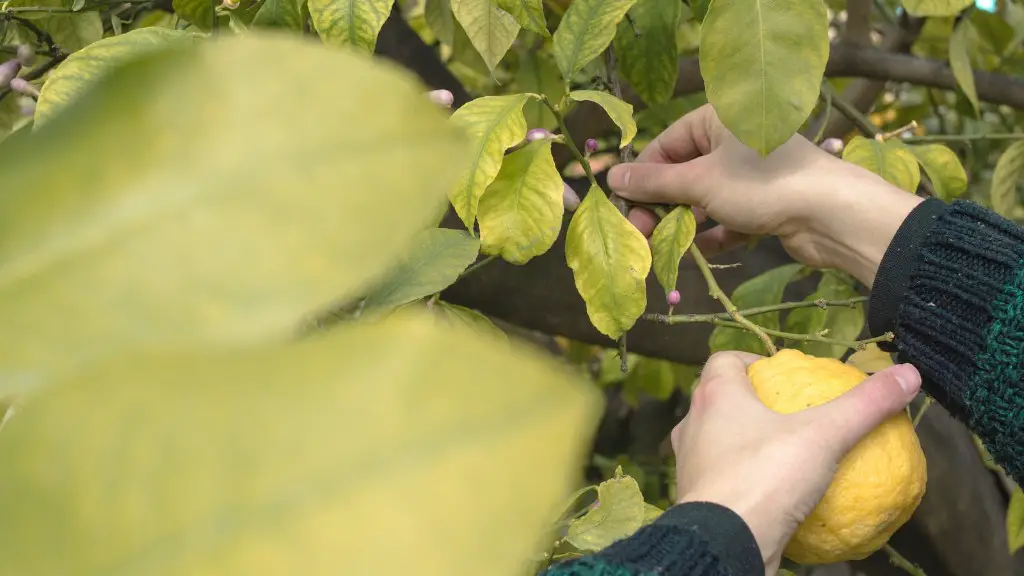When does lemon tree flower? Lemon trees can bloom all year long and generally have multiple cycles of blooming throughout the year. Although each tree is different, most lemon trees flower depending on environmental factors, such as access to adequate light, water, and temperatures. On average, lemon trees may flower in late spring, summer, and into the fall season. Each flower will last about 7-10 days before dashing away and turning into a lemon fruit.
Lemon trees need warm and sunny days with ample light exposure to encourage blossoming. Too much shade, drought, or cold temperatures can stunt flowering, and the flowers will only open when temperatures are above 65 degrees Fahrenheit. Also, the citrus tree flowers require a certain balance of the nitrogen and phosphorous levels in the soil for them to thrive and set fruit. The flowers are quite delicate and best viewed in the early morning during cooler temperatures.
Lemon tree flowers are small, white, lightly scented, and clustered in groups of three to twelve blooms. They need to be pollinated by honey bees to begin the formation of the lemon fruits. If the flowers stay on the tree, they start to form the green developing lemons. Maintaining an optimal balance of nutrients and sunlight, combined with regular watering and pruning, will best ensure the tree keeps blooming and yields more lemon harvest.
Keep in mind, lemon trees grow best and produce the most fruit when temperatures and sunlight are available in abundance. While blooming heavily in spring and summer, different climates will experience different yields based on the ideal growing conditions. In chilly regions, it may be necessary to provide the lemon tree with extra mulch and insulation to protect them from cold damage.
Ways to Help Lemon Trees to Flower
To help lemon trees to flower and improve their yield, provide ample sunlight, at least six hours of direct sun each day, and water the tree regularly. Place the tree in soil with a pH level that’s slightly acidic. Place your lemon tree in a sheltered and secure area as it is susceptible to strong winds and doesn’t respond well to extreme frost. Make sure to provide a good drainage system as the roots don’t do well in wet soil. Also, use fertilizer to create optimal growing conditions. It’s best to use ammonium sulfate-based compounds during the flowering period and a water-soluble complex after flowering to support the emergence of new foliage.
Fertilizer should make up no more than 10% of the tree’s nutrients. Also, make sure to prune away any dead branches or shoots to aerate the tree and expose new growth. It is also beneficial to remove any deformed flowers that don’t seem to be developing lemons. When done correctly, these methods can help the lemon tree to flower and yield an abundant lemon harvest.
How to Care for Lemon Tree Flowers
To best take care of the lemon tree flowers, water them consistently while maintaining adequate drainage to avoid root rot. Lemon trees need plenty of sunshine, but avoid overexposure to direct sunlight in order to prevent leaf burn. When applying fertilizer, pH-balanced products are most suitable. Tools like gardening gloves and pruning shears can make it easier to remove dead blooms or branches. It’s best to do this during the winter when the tree is in its dormancy period.
Lastly, handle the lemon flowers with care to prevent them from bruising or getting damaged. If you’re worried about pests like aphids, use an insecticide that won’t hurt honey bees that visit the flowers. A properly cared for lemon tree will flower naturally from any remaining buds and offer a bountiful harvest.
Pruning Lemon Trees
Pruning is an important part of keeping the lemon tree healthy, encouraging new growth and more flowers. As mentioned, the tree should be pruned when in its dormant season during winter. Remove any overgrown branches or dead ones with pruning shears, and clear away any leaves that are blocking the sunshine. Make sure to cut back the main stem of the lemon tree, as well as any branches you think are too close to each other. Additionally, you may need to remove any branches that aren’t in a horizontal angle – this will be determined by the angle of the sun.
Gradual pruning is the best way to care for a lemon tree, as pruning too severely will cut the tree too far back and reduce its chances of flowering. If you don’t prune your lemon tree regularly, it can overgrow and cause the roots to compete for resources, both of which can inhibit flowering. Furthermore, spacing the pruning cycles out allows the tree to balance growth and repairs itself in between pruning cycles.
Combating Pests and Diseases
Citrus trees are more prone to pest infestations and diseases, so it’s important to act quickly and treat them as soon as they’re spotted. Aphids, scale, and mites are the most common pests that harm lemon trees, whereas the main diseases of citrus trees are blights and wilts. Thrips, mites, and several species of scale can harm both leaves and flowers. You can use insecticides, as long as they don’t harm the beneficial honeybees that help pollinate and form the lemons.
In terms of diseases, the most common one is called carambola wilt, which causes the leaves to dry up and the branch tips to dieback. Treat this disease by trimming affected branches, avoiding over-watering, and using fungicides. Additionally, the citrus canker disease can manifest as blotches or lesions on the leaves, so it’s best to prune away the infected foliage and burn it.
Managing Temperatures and Wind
Cold and windy weather can stunt flower growth and damage lemon trees. Therefore, it is essential to provide the tree with protection from both elements. When planting a lemon tree, find a sunny and sheltered area to ensure it receives enough sunlight. Mulch or cover the base of the soil to conserve warmth, and erect tall barriers or walls to protect the tree from strong winds. Use a light fabric cover, such as a frost cloth, to keep the temperatures stable if there are sudden drops.
Keep in mind, too much cold or wind can cause the flowers to fall or die prematurely. If the overall climate is too cold, you may need to look into keeping your lemon tree indoors or in a greenhouse. This provides more control over the temperature, lighting, and wind exposure, while also protecting the tree from extreme weather conditions.



